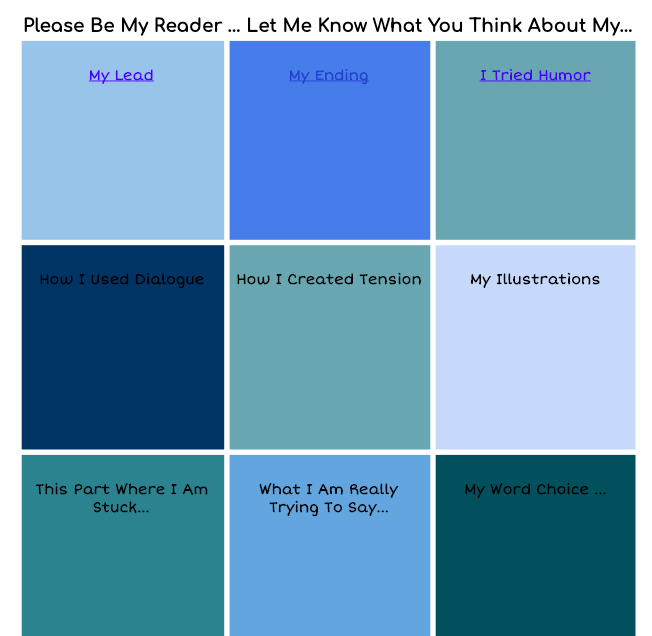Every Writer Needs a Reader - How to Design Virtual Response Spaces for Writers #SOL20 #TWTBlog
7 days ago
It feels
Longer
This sums up how I have felt each week since March 31. I miss our virtual chats. I want to know what is happening in your life. I am wondering what you are doing, how you are doing. I long for your response on my life, my thoughts, my ideas. Writing is just not the same without response, without your community.
I think our students feel the same way right now. As I listen to class zoom meetings and anecdotes from teachers, it is clear kids miss being together. If it weren’t for Slice of Life, I would never believe that virtual response could be as powerful as in-person response. I feel as if I know my fellow Slicers – really know them- even though I haven’t met most of you personally. I want this type of connection for students right now. A virtual connection with writers they know - just now apart.
For the past three weeks, I have been helping teachers and literacy leaders design ways for kids to respond to each other’s writing. It is not peer-editing that I am looking to achieve, rather something more like providing a reader for every writer. Here is one example of what we have tried:
(Please note that this is a sample. I am not using current student writing or responses because I do not want to add the burden of getting permission from families right now. I mocked this up so you could simply see the structure and then create your own.)
I am using both Padlet (click on My Lead and I Tried Humor) and Flipgrip (click on My Ending) depending on which tool each teacher prefers. Flipgrip allows for students to respond to each other with an audio note. It is nice for students to hear each other’s voices in an asynchronous manner. The example allows students to set goals for their writing and then ask for response based on what they tried as a writer. Each student decides where to post their writing and chooses some peers to respond to as well. You could form peer groups to respond or ask students to respond to a certain number of peers. There are many ways to manage this - choice and agency are important, as well as assuring each writer receives response.
We met with students in a synchronous session to explain how the board worked and to reinforce the idea of being someone’s reader. The reader’s role is to let the writer know how the writing impacted you. We shared some response prompts such as:
As your reader…
• I was really moved when…
• You hooked me here…
• I didn’t understand…
• I wanted to know more here…
• I wondered …
Students look forward to reading each other’s pieces and the responses for their writing and their peers’ writing. They are not only are they writing more, they are also reading more!
I think there are so many ways you could use this structure to scaffold students responding to one another’s writing. You could design it by writing club, by genre, by topic or just by student name. It takes a week or so for them to get used to it and then it starts to take off! It is a way for them to be together without us.
Last week during a #TWTBlog Meetup Zoom session, Melanie Meehan shared a way to do this in Google Drive so students can leave voice note responses for each other. If you are interested in trying this in Google check out her video: https://drive.google.com/file/d/1bDGjQVqC5hg78NrwzEHqQUBwr0Yb6rdY/view
If you would like to use the form I shared, here is a blank template.



